You can see the growing industry of artificial intelligence nowadays. One of the major artificial intelligence company is Deepseek. Deepseek with its up to-date AI models, empowers businesses to solve their complex problems, optimize their operations and to improve customer experience.
The question here is that, out of so many AI models available which model best suits you? In this blogpost, we will explore Deepseek models list with its features, applications and benefits.
What is DeepSeek?
Deepseek is a Chinese AI company developed by Liang Wenfeng. Deepseek is an emerging open-source large language model developed with a distinct focus on multilingual fluency—particularly in Chinese and English.
Unlike many models retrofitted for multilingual tasks, DeepSeek was designed from the ground up to handle both languages equally well. This dual-language capability makes it especially relevant for developers, researchers, and institutions across Asia that need culturally aware, bilingual AI systems.
Technically, DeepSeek is built on a transformer architecture with optimizations like grouped-query attention and multi-query attention, which enable it to scale efficiently while maintaining low inference latency—even on modest hardware.
Its performance across a range of benchmarks has shown it to be competitive with established models like LLaMA and Mistral, offering strong reasoning, coding, and language generation abilities.
The developers have released model weights, training details, and datasets, giving the global AI community full transparency—something still uncommon among high-performing LLMs.
DeepSeek has also undergone instruction tuning using diverse, high-quality datasets in both Chinese and English, which enhances its ability to follow human prompts and generate contextually appropriate outputs.
This approach makes it well-suited not just for academic research, but also for real-world applications like education, legal assistance, and multilingual content creation. As AI continues to globalize, DeepSeek represents a meaningful shift toward inclusive, localized, and open AI development.
Now lets explore Deepseek Model list.
DeepSeek Models List:
DeepSeek-V2
DeepSeek-V2 is one of the most impressive breakthroughs in large language models recently. Developed by DeepSeek-AI, it builds on the Mixture-of-Experts (MoE) architecture, that means it doesn’t rely on the full model every time it processes a prompt.
Instead, only a small portion—about 21 billion out of its massive 236 billion parameters—is activated per token. This makes the model extremely efficient.
Think of it like having a team of specialists, and only calling on the right experts for each task, rather than involving everyone which results into a model that performs at the level of giants but with far less computational cost.
What’s truly impressive is that DeepSeek-V2 matches or even outperforms dense models that use far more compute, especially in tasks involving reasoning, multilingual understanding, and long-context scenarios.
A big part of what makes DeepSeek-V2 so efficient is its novel Multi-Head Latent Attention (MLA) mechanism. Traditional models store tons of information in memory while generating responses—which slows things down and uses lots of resources.
MLA reduces that burden by compressing this data into a lighter, more efficient form, cutting memory usage dramatically without hurting performance. This change also boosts inference speed, which makes it far more practical for real-world applications.
Add to that the ability to handle up to 128K context length and compatibility with the Open Neural Network Exchange (ONNX), and you’ve got a model that’s both powerful and developer-friendly.
DeepSeek-V2 isn’t just another academic demo—it’s a truly production-ready tool that delivers high performance with fewer resources, making advanced AI more accessible to researchers, engineers, and even startups.
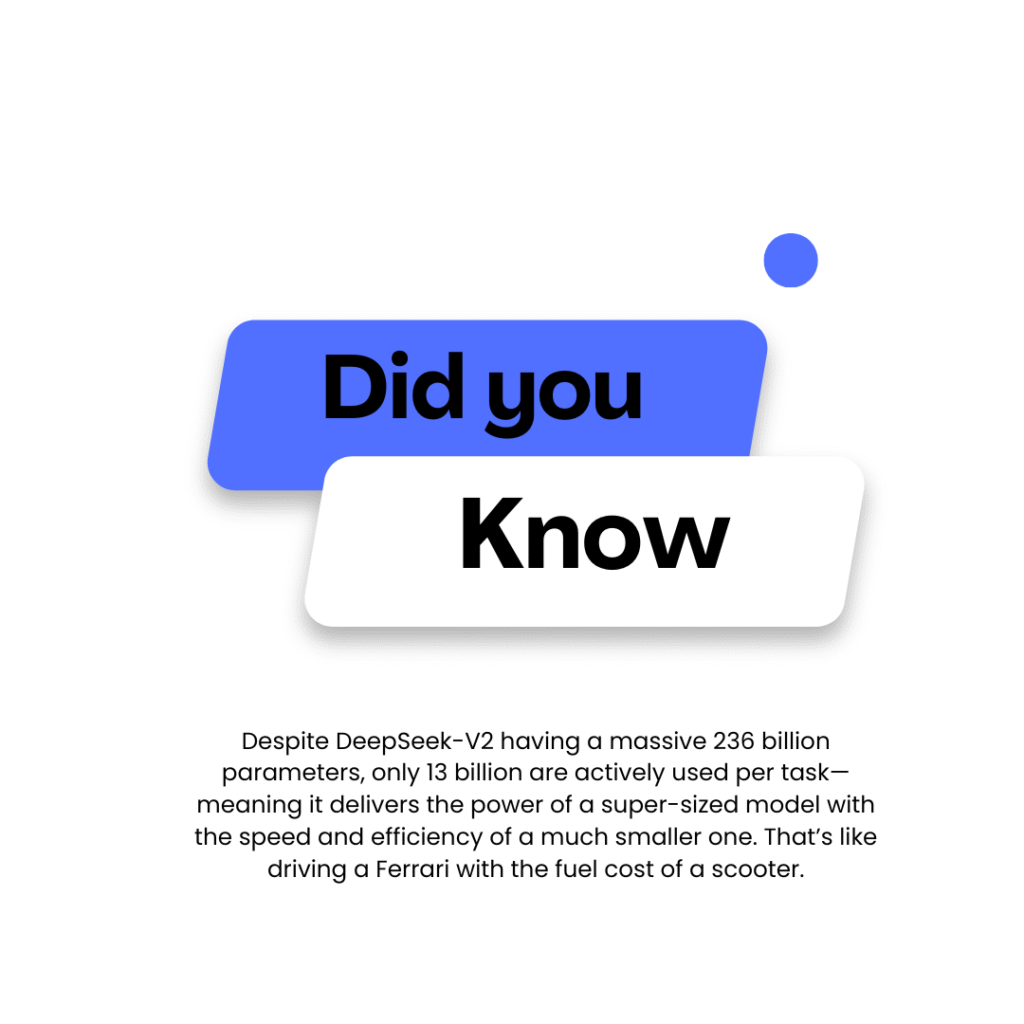
DeepSeek-Coder-V2
DeepSeek-Coder-V2 is a next-generation code generation and understanding model designed to rival the best AI coding assistants on the market.
Built by the DeepSeek team, it uses a powerful Mixture-of-Experts (MoE) architecture—meaning that instead of using the entire 236 billion parameter model at once, only 21 billion parameters are activated per token.
This dramatically improves computational efficiency without sacrificing quality. What sets DeepSeek-Coder-V2 apart is its exceptional performance across tasks like code completion, debugging, explanation, and multi-language support.
It is trained on a massive 6 trillion token dataset, including both natural language and code, making it highly capable of understanding nuanced programming instructions while maintaining fluency in everyday English. Its strength lies in handling real-world, complex programming tasks with remarkable accuracy.
What makes DeepSeek-Coder-V2 particularly valuable for developers is its 128K context length, allowing it to understand large codebases and maintain coherence over extended prompts.
It supports multi-turn conversation, that means it can follow long chains of reasoning and refine its output across dialogue—something crucial in collaborative software development.
Unlike many of its competitors, it is optimized for performance and scale, thanks to advanced techniques like Multi-Head Latent Attention (MLA), which improves inference speed and reduces memory load.
On real-world benchmarks such as HumanEval and MBPP, it outperforms major coding models like GPT-Code and CodeLLaMA.
DeepSeek-Coder-V2 isn’t just a research artifact—it’s a practical, production-ready coding assistant designed for engineers, data scientists, and startups looking to integrate smarter AI into their software development workflows.
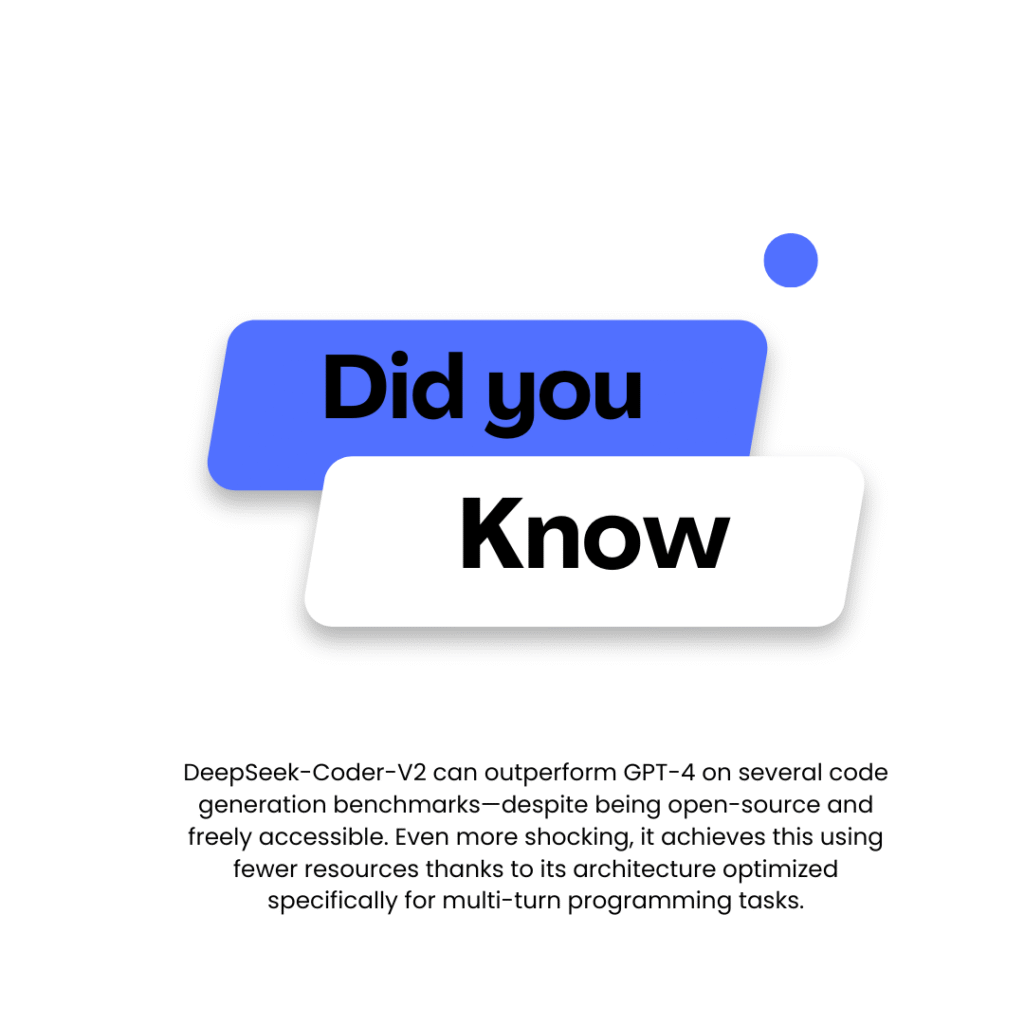
DeepSeek-R1
DeepSeek-R1 is the first frontier-level, general-purpose large language model (LLM) released by DeepSeek, representing a major leap in open-source AI capabilities.
Unlike many open models that rely heavily on derivative training or fine-tuning, DeepSeek-R1 is trained from scratch using an expansive 2 trillion tokens from both English and Chinese corpora.
What sets it apart is the “Retriever-before-Generator” architecture—a dual-stage system that first retrieves relevant context from a large external dataset before generating responses.
This approach mirrors how humans think and recall information, enhancing factual accuracy, reducing hallucinations, and giving the model better grounding in real-world data. DeepSeek-R1 also supports a 128K context window, making it well-suited for long-form reasoning, multi-turn conversations, and complex task handling.
At its core, DeepSeek-R1 is specifically built to keep transparency in view Its architecture integrates innovations like GQA (Grouped Query Attention) and weight-sharing to boost speed and memory efficiency, enabling more accessible deployment on real-world infrastructure.
With open weights and training data documentation, DeepSeek-R1 positions itself as a research-friendly alternative to proprietary models like GPT-4 or Claude.
On benchmarks such as MMLU, GSM8K, and HumanEval, it performs competitively with leading models, demonstrating strong language understanding, reasoning, and problem-solving skills.
DeepSeek-R1 isn’t just another open-source model—it’s part of a broader mission to democratize AI by delivering cutting-edge capabilities backed by transparent research and reproducible performance.
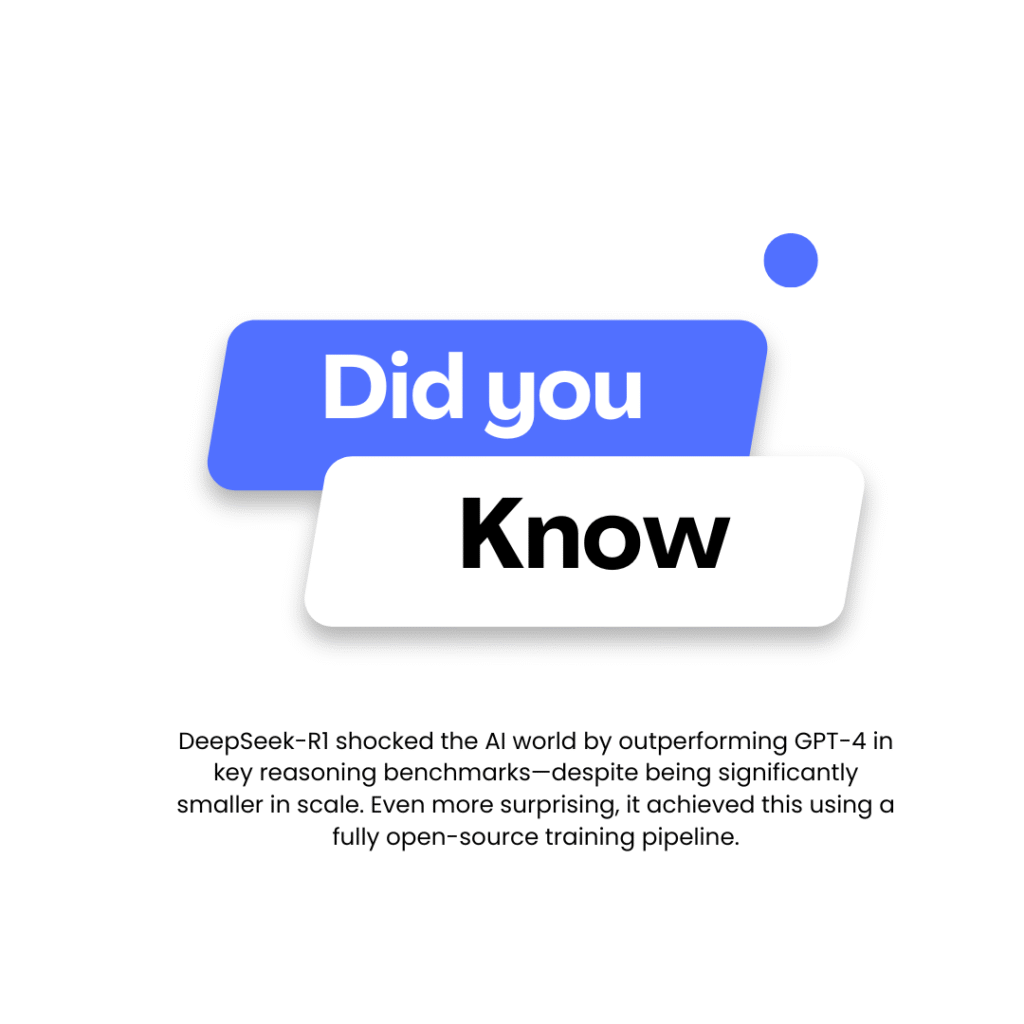
DeepSeek-V3
DeepSeek-V3 represents the latest evolution in DeepSeek’s family of large language models, pushing the boundaries of reasoning, instruction-following, and code generation. Trained on a meticulously curated multi-trillion-token dataset, DeepSeek-V3 integrates both multilingual and multi-modal understanding, with a strong focus on English and Chinese performance.
Unlike its predecessors, DeepSeek-V3 combines a refined transformer backbone with an advanced retrieval-augmented generation system, allowing it to process queries with improved factual grounding and deeper context awareness.
With a context window of up to 128K tokens, the model can handle long documents, multi-step logic tasks, and complex dialogue without losing coherence—a major step forward in AI’s ability to support enterprise and academic workflows.
Under the hood, DeepSeek-V3 also incorporates architectural enhancements like grouped-query attention and layer-wise scaling, helping it achieve better efficiency and stability even at large parameter sizes.
What’s remarkable is how this model narrows the performance gap between open and proprietary LLMs. On key benchmarks like MMLU, GSM8K, and HumanEval, DeepSeek-V3 consistently ranks alongside top-tier models such as GPT-4 and Claude 3.5.
More importantly, it does so while remaining open-access, with available weights and detailed training documentation—making it a valuable tool for researchers, developers, and institutions focused on transparent and reproducible AI.
DeepSeek-V3 is not just a technical upgrade; it reflects a maturing open-source philosophy that balances power, accessibility, and responsibility.
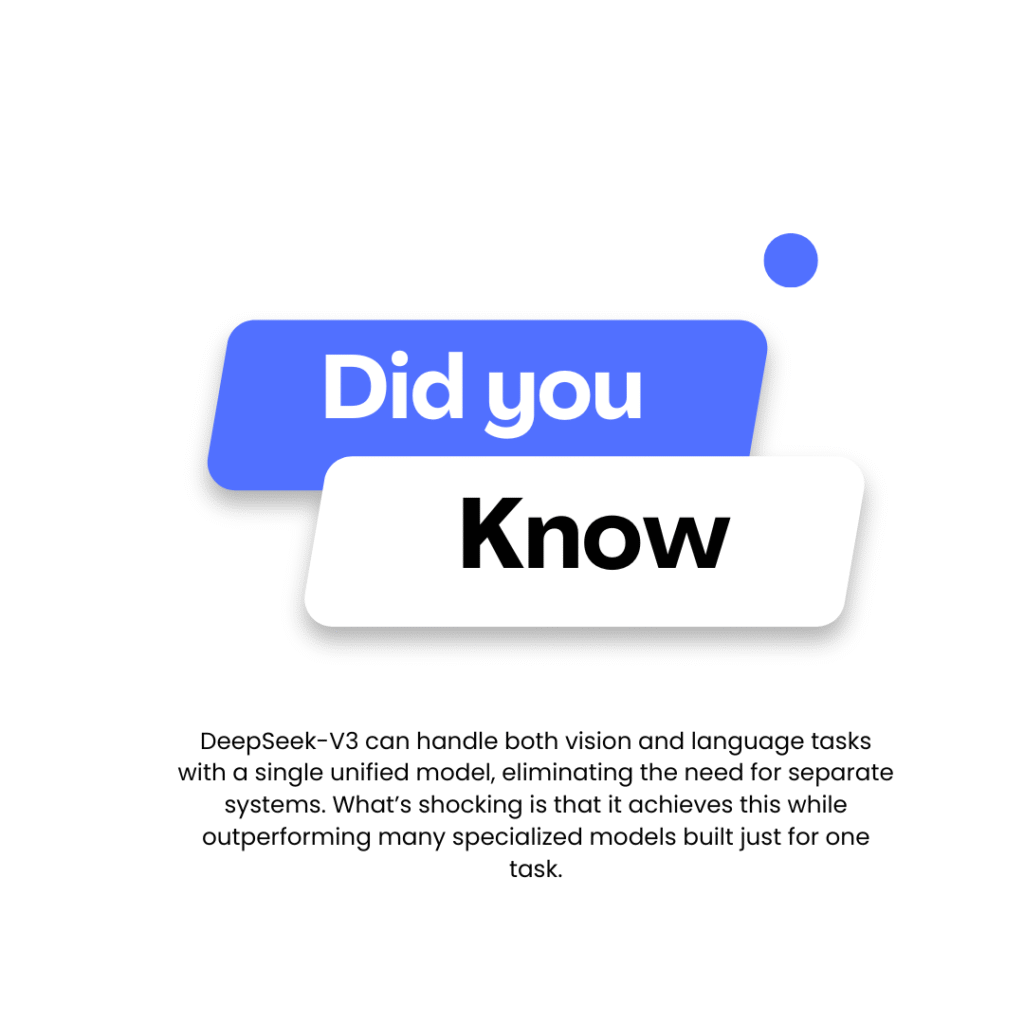
Janus-Pro
Janus-Pro is an advanced open-source language model which is created by the research team at Tsinghua University. It stands out for using a dual-architecture training method that combines autoregressive generation with masked language modeling, allowing it to understand and produce language with greater accuracy and flexibility.
Unlike traditional LLMs that rely solely on one training objective, Janus-Pro incorporates both next-token prediction and span corruption tasks—giving it a unique edge in reasoning, factual accuracy, and text coherence.
This hybrid pretraining strategy enables the model to better understand both long-form context and specific localized edits, making it more versatile across a wide range of use cases, from academic research and dialogue generation to complex technical writing.
Built on the Transformer architecture, Janus-Pro has been optimized for both instruction tuning and general-purpose language understanding.
What makes Janus-Pro stand out isn’t just its innovative training method—it’s the commitment to open science. The Janus team has publicly released the model weights, training configurations, and performance benchmarks, encouraging community-driven development and evaluation.
This transparency has fostered rapid improvements and applications in multilingual tasks, coding, and high-level reasoning.
In terms of benchmark performance, Janus-Pro competes closely with proprietary models in tasks like MMLU, ARC, and GSM8K, while remaining fully open and reproducible.
It’s not just a model—it’s a contribution to the evolving ecosystem of trustworthy and collaborative AI, proving that academic institutions can still shape the frontier of generative language technologies.
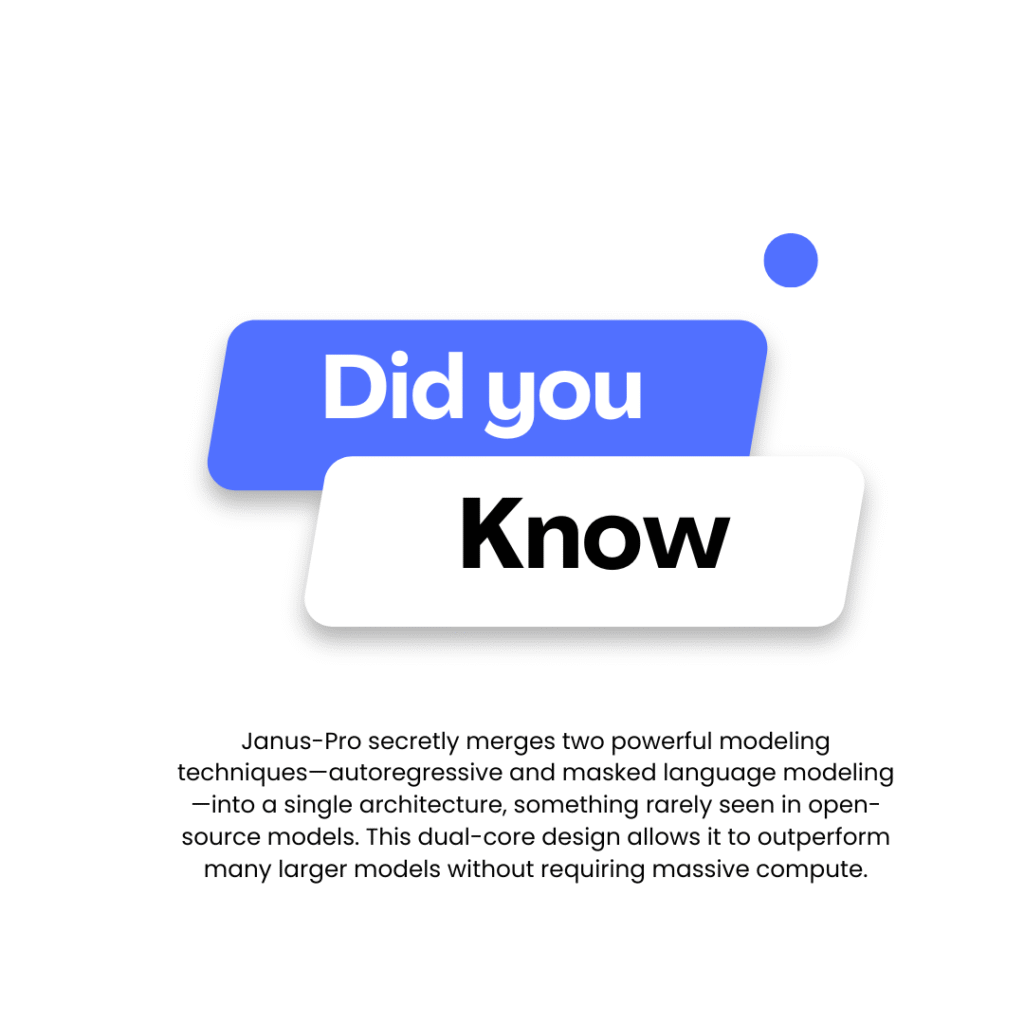
How to Choose the Right DeepSeek Model
After having a brief overview of Deepseek models list, you might be confused out of these which model should I choose? The answer is quiet simple, Choose according to your need. If you are working on small tasks like summarizing short texts, answering simple questions, or building lightweight chatbots than you can choose DeepSeek-R1. On the other hand, If you are working on larger tasks like generating high-quality content, analyzing large documents, writing code, or handling multiple language than you can use DeepSeek-Coder-V2.
The approach to choose the right Deepseek model from Deepseek models list is that, you should test each model with your own data and see which model best suits your needs.
To make it easier, here’s a quick comparison:
| Model Name | Release Date | Main Purpose | Key Features |
|---|---|---|---|
| DeepSeek-V2 | Nov 2023 | Will assists you in writing and debugging code. | Trained on 60% source code, 10% mathematical content, and 30% natural language. supports multiple programming languages. |
| DeepSeek LLM | Dec 2023 | Works on general-purpose language understanding. | 67 billion parameters; comparable performance to GPT-4; handles various language tasks. |
| DeepSeek-V2 | May 2024 | Enhanced efficiency and reasoning in language tasks | 236 billion total parameters with 21 billion active; uses Mixture-of-Experts (MoE) architecture. |
| DeepSeek-Coder-V2 | Jul 2024 | Advanced coding assistance for complex programming tasks | 236 billion parameters; 128,000-token context window; supports 338 programming languages. |
| DeepSeek-V3 | Dec 2024 | High-performance language model for diverse tasks | 671 billion parameters; MoE architecture; trained on 14.8 trillion tokens; context length of 128,000. |
| DeepSeek-R1 | Jan 2025 | Advanced reasoning and problem-solving capabilities | Based on DeepSeek-V3; trained via reinforcement learning; matches or exceeds OpenAI’s o1 model. |
| Janus-Pro-7B | Jan 2025 | Image understanding and generation | Vision model; processes and generates images; expands DeepSeek’s capabilities beyond text. |
| DeepSeek-Prover-V2 | Apr 2025 | Formal mathematical theorem proving | Specialized in Lean 4 proofs; uses reinforcement learning for subgoal decomposition; state-of-the-art performance in theorem proving. |
Conclusion
The DeepSeek models list describes the company’s commitment to innovation and excellence. Whether you are looking to enhance customer engagement, analyze visual data, or make data-driven decisions, DeepSeek has a model which fulfills your needs. By understanding the features, applications, and benefits of each model, you can unlock the full potential of AI for your business.
Ready to explore DeepSeek’s offerings? Visit the official DeepSeek website to learn more and get started today.
To get more Informed about AI Trends visit my website.
Additional Resources
FAQs
What DeepSeek models are available?
DeepSeek offers a wide range of models, including DeepSeek-V3 (NLP), DeepSeek-R1 (Computer Vision), DeepSeek-Predict (Predictive Analytics), and DeepSeek-API (Integration).
What is the model name of DeepSeek API?
The model name for DeepSeek API integration is DeepSeek-API.
Which is better, DeepSeek-V3 or R1?
It depends on your needs. DeepSeek-V3 is ideal for text-based applications like chatbots, while DeepSeek-R1 excels in visual data analysis. Both are leaders in their respective domains.
What is the difference between the DeepSeek models?
The primary difference lies in their functionalities:
- DeepSeek-V3 focuses on NLP and text generation.
- DeepSeek-R1 specializes in computer vision.
- DeepSeek-Predict is designed for predictive analytics.
- DeepSeek-API offers versatile integration capabilities.
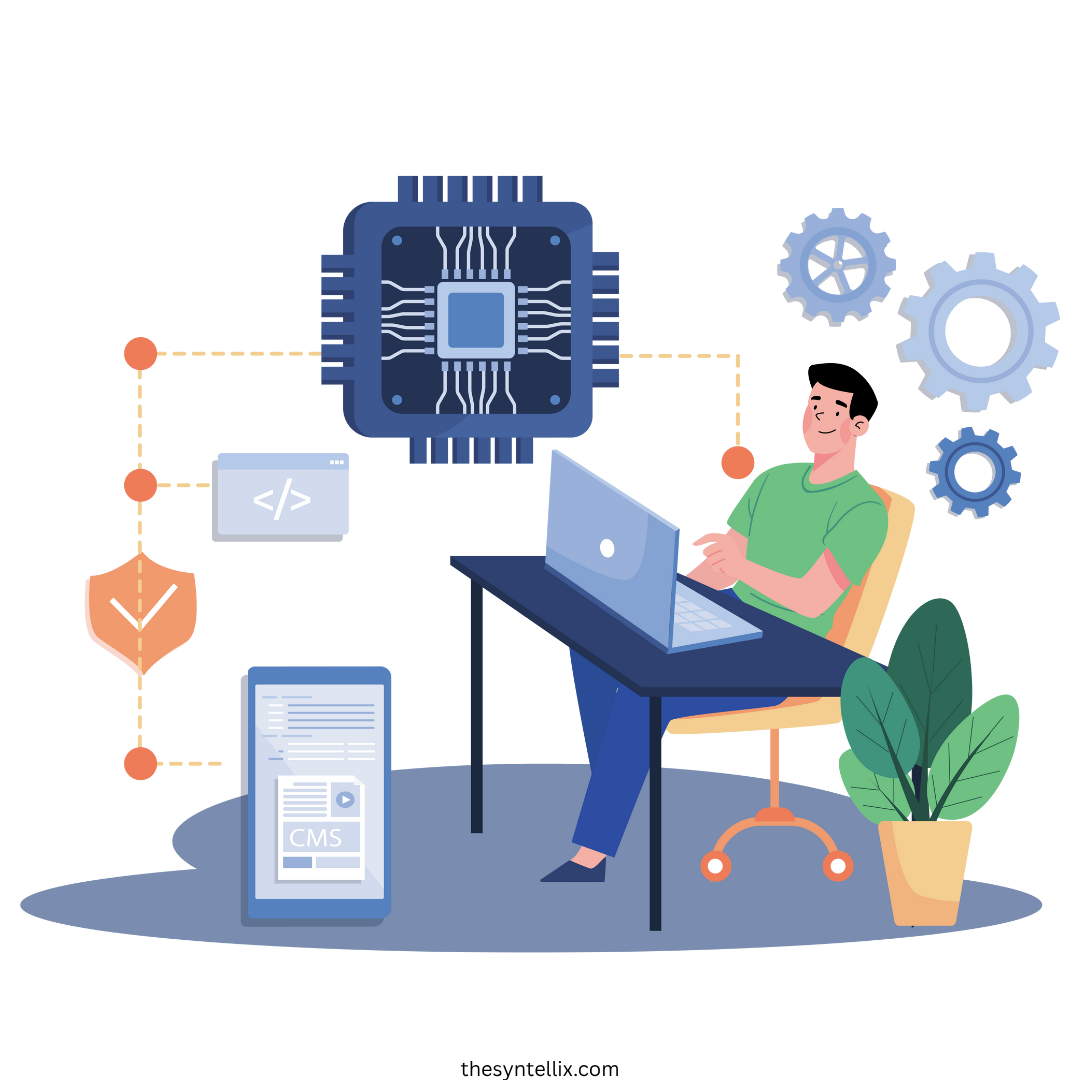
Stay ahead of the curve with the latest insights, tips, and trends in AI, technology, and innovation.
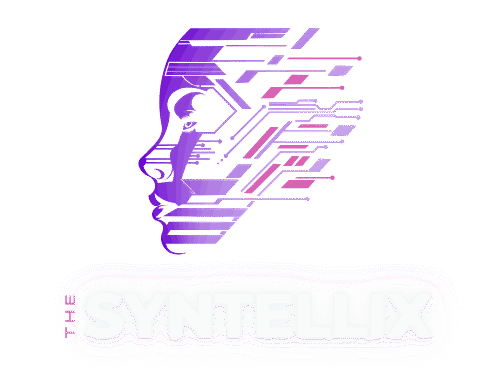
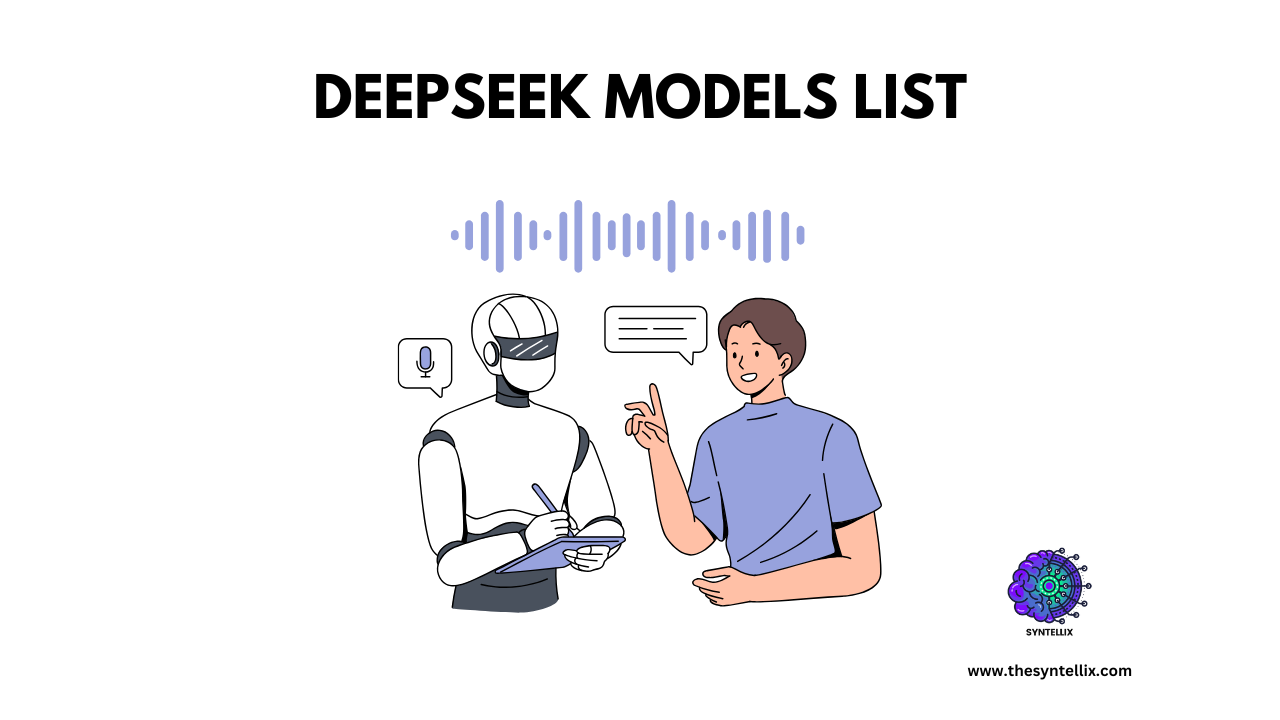
The advancements in AI, particularly with Deepseek’s models, are truly remarkable. DeepSeek-V2’s efficiency in handling diverse tasks with fewer activated parameters is impressive. The specialization of DeepSeek-Coder-V2 in code generation across 338 languages highlights its versatility. Its application in healthcare, automotive, and retail sectors shows its broad utility. How does DeepSeek ensure the reliability and accuracy of its models in such diverse applications? German news in Russian (новости Германии)— quirky, bold, and hypnotically captivating. Like a telegram from a parallel Europe. Care to take a peek?
Thank you, I’ve recently been looking for information about this
subject for a while and yours is the best I’ve discovered so far.
However, what in regards to the bottom line?
Are you sure about the source?